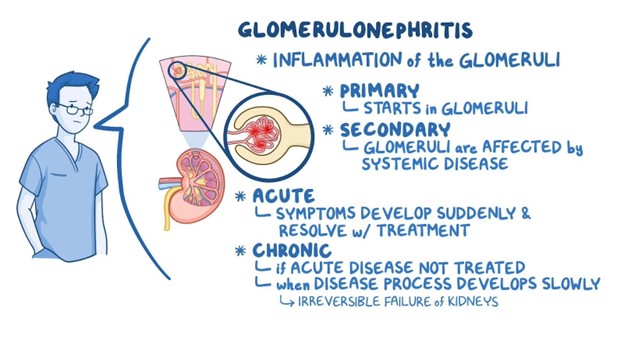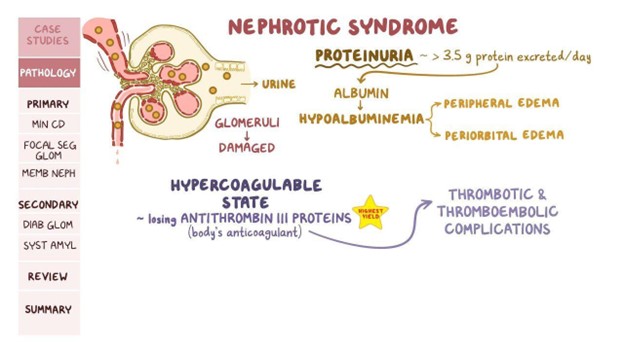A nurse is caring for a 7-year-old child who has an upper respiratory infection and type 1 diabetes mellitus. Which of the following statements by the mother indicates a need for further instruction?
“I will continue to check his blood sugar two times every day.”
"I will report a change in her breathing or any signs of confusion.”
“I will encourage her to drink half a cup of water or sugar-free fluid every 30 minutes”
"I will notify the doctor if her temperature is not controlled by acetaminophen”
The Correct Answer is A
A. "I will continue to check his blood sugar two times every day."
Correct Explanation: This statement indicates a need for further instruction.
Explanation: A child with type 1 diabetes requires frequent blood sugar monitoring, especially during illness. Checking blood sugar only twice a day is not sufficient, especially when the child has an upper respiratory infection. Illness can impact blood sugar levels, so more frequent monitoring is necessary to ensure proper diabetes management.
B. "I will report a change in her breathing or any signs of confusion."
Incorrect Explanation: This statement shows awareness of potential complications and the need to monitor for them.
Explanation: Children with type 1 diabetes are at risk of diabetic ketoacidosis (DKA) when they are sick. Changes in breathing patterns and signs of confusion are symptoms of DKA. Reporting these symptoms is important, as it could indicate a serious diabetic complication.
C. "I will encourage her to drink half a cup of water or sugar-free fluid every 30 minutes."
Incorrect Explanation: This statement demonstrates proper fluid management, especially during illness.
Explanation: Encouraging the child to stay hydrated with sugar-free fluids is essential, particularly when the child has an upper respiratory infection. Proper hydration helps prevent dehydration, which can be more concerning for a child with diabetes.
D. "I will notify the doctor if her temperature is not controlled by acetaminophen."
Incorrect Explanation: This statement shows an understanding of the importance of managing fever in a child with diabetes.
Explanation: Children with diabetes can experience difficulty managing blood sugar levels when they're sick. Fever can exacerbate this issue. Using acetaminophen to control fever is appropriate, and notifying the doctor if fever persists is a responsible action.
Nursing Test Bank
Naxlex Comprehensive Predictor Exams
Related Questions
Correct Answer is D
Explanation
A) Absence of proteinuria:
Chronic glomerulonephritis often involves damage to the glomeruli in the kidneys, which can lead to the leakage of protein into the urine, resulting in proteinuria. The absence of proteinuria would be an unexpected finding in a patient with chronic glomerulonephritis. Therefore, this choice is incorrect.
B) Serum phosphorus 4.0 mg/dL (within expected reference range):
Serum phosphorus levels within the expected reference range are not directly related to chronic glomerulonephritis. While abnormalities in electrolyte levels might occur due to kidney dysfunction, serum phosphorus within the normal range is not a hallmark finding of glomerulonephritis. Therefore, this choice is incorrect.
C) Serum potassium 3.8 mEq/L (within the expected reference range):
Similar to serum phosphorus, serum potassium levels within the normal range are not specific to chronic glomerulonephritis. Kidney dysfunction can indeed affect electrolyte levels, but a serum potassium level within the normal range doesn't provide specific information about glomerulonephritis. Therefore, this choice is incorrect.
D) BUN 50 mg/dL (elevated):
Blood Urea Nitrogen (BUN) is a waste product that is filtered by the kidneys. Elevated BUN levels indicate impaired kidney function, as the kidneys are less efficient at filtering and excreting waste products. Chronic glomerulonephritis can lead to progressive kidney damage, which can result in elevated BUN levels due to decreased filtration and clearance. Therefore, an elevated BUN level is an expected finding in a patient with chronic glomerulonephritis.

Correct Answer is C
Explanation
A. "We worry about surgery. Do you think we should investigate direct donation of blood?"
Explanation: This statement doesn't show a clear understanding of nephrotic syndrome. Nephrotic syndrome is a kidney disorder that involves the kidneys' ability to filter blood, but it doesn't typically involve blood donation or surgery related to that. Direct donation of blood is not relevant to the treatment or management of nephrotic syndrome.
B. "We'll have to encourage lots of liquids. Did you say about Biters per day?"
Explanation: This statement suggests a misunderstanding of nephrotic syndrome and its management. Encouraging lots of liquids is generally not a primary concern in nephrotic syndrome. In fact, excess fluid intake might be counterproductive, as it could worsen edema (swelling) that often occurs with this condition. Additionally, the term "Biters per day" doesn't seem relevant to nephrotic syndrome or its management.
C. "My child really likes chips and bologna. I guess we will have to find something else."
Explanation: This statement indicates an understanding of dietary considerations related to nephrotic syndrome. Nephrotic syndrome involves protein loss through the urine, which can lead to low protein levels in the blood. To address this, dietary changes are often recommended to include foods rich in protein. Avoiding high-sodium foods like chips and bologna is also important, as excessive sodium intake can contribute to fluid retention and worsen edema.
D. "We understand the need for antibiotics, hope they can be given orally."
Explanation: This statement doesn't relate to nephrotic syndrome or its management. Nephrotic syndrome primarily involves issues with kidney function and protein loss, and antibiotics are not a standard treatment for this condition. Antibiotics are used to treat infections, which can sometimes be a complication of nephrotic syndrome due to the immune system's vulnerability, but the statement doesn't focus on the understanding of the disease itself.
Correct Answer: C. "My child really likes chips and bologna. I guess we will have to find something else."
Explanation: This statement shows an understanding of the dietary changes needed for a child with nephrotic syndrome. It acknowledges the importance of adjusting the child's diet to include protein-rich foods and avoid high-sodium options, which aligns with the nutritional considerations for managing nephrotic syndrome.

Whether you are a student looking to ace your exams or a practicing nurse seeking to enhance your expertise , our nursing education contents will empower you with the confidence and competence to make a difference in the lives of patients and become a respected leader in the healthcare field.
Visit Naxlex, invest in your future and unlock endless possibilities with our unparalleled nursing education contents today
Report Wrong Answer on the Current Question
Do you disagree with the answer? If yes, what is your expected answer? Explain.
Kindly be descriptive with the issue you are facing.
